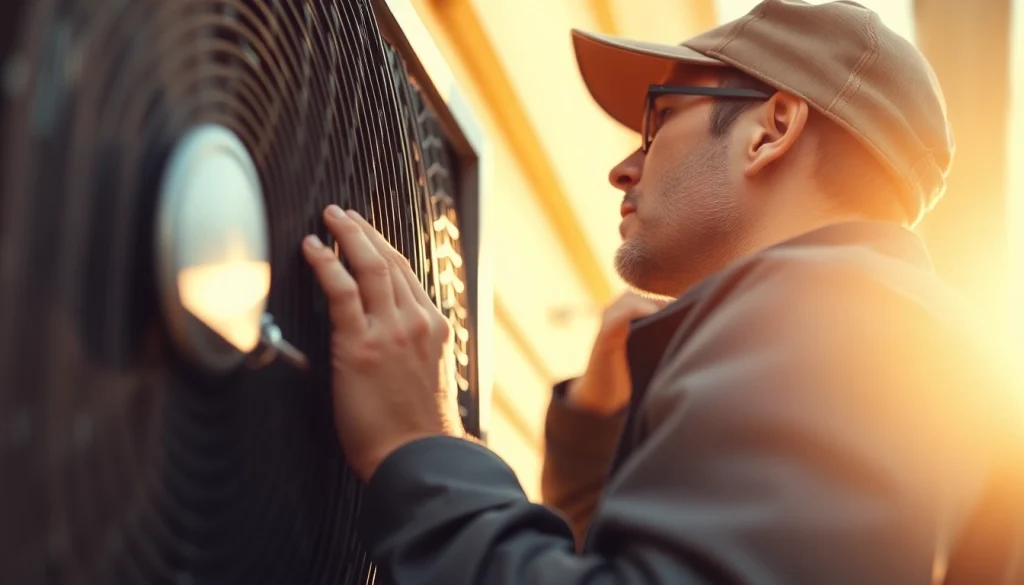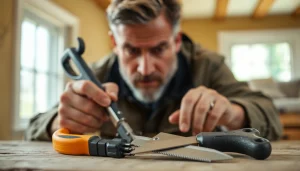Why Your Central Air Conditioner is Not Blowing Cold: Causes and Solutions

Understanding Why Your Central Air Conditioner is Not Blowing Cold
As the temperatures rise, the need for an efficiently functioning central air conditioner becomes paramount. If you’ve noticed that your central air conditioner is not blowing cold air, you are not alone. This is a common problem that many homeowners face. Understanding the underlying reasons and knowing how to troubleshoot these issues can save you time and money and keep your home cool and comfortable during the heat. This article will delve into the common causes of an underperforming air conditioner, actionable troubleshooting steps, when to call a professional, and best practices for maintaining your cooling system.
Common Causes for Lack of Cool Air
The scenario where your central air conditioner runs but fails to blow cold air can arise from various issues. It’s crucial to identify the underlying causes to take appropriate action.
- Low Refrigerant Levels: One of the principal reasons an air conditioning system stops cooling effectively is a refrigerant leak. If the refrigerant is low, the AC can’t absorb heat properly, leading to insufficient or no cold air being produced. Identifying a refrigerant leak often requires assistance from HVAC professionals.
- Dirty Air Filters: Air filters play a vital role in maintaining free airflow throughout your air conditioning system. If these filters are clogged or dirty, they can impair airflow, preventing effective cooling. Replacing or cleaning air filters regularly is an effective preventive measure.
- Thermostat Issues: The thermostat controls the entire cooling mechanism. If it’s set incorrectly or malfunctioning, it may not send the correct signals to cool your home, resulting in warm air blowing from your vents.
- Compressor Failure: The compressor is responsible for circulating the refrigerant through the system. If it is not operational, the AC unit cannot produce cold air. Compressors can fail due to age, electrical issues, or a lack of regular maintenance.
- Blocked Condenser Coils: The outdoor unit of your air conditioning system has condenser coils. When these coils are blocked by debris like leaves, dirt, or other obstructions, they cannot dissipate heat, preventing overall cooling efficiency.
Symptoms of an Underperforming AC Unit
Recognizing the symptoms associated with an underperforming AC unit can guide your troubleshooting efforts.
- Warm Air from Vents: One of the most noticeable symptoms is when the AC blows warm air instead of cool, indicating that it may be low on refrigerant or experiencing a compressor issue.
- Strange Noises: Unusual sounds, such as banging or hissing, may signify mechanical problems or refrigerant leaks.
- Inefficient Cooling: If your AC is running but struggles to maintain the set temperature, it might require maintenance or repairs.
- Increased Energy Bills: A sudden spike in your electric bill without any increase in use might indicate your AC system is working harder than it should, potentially due to inefficiencies like clogged filters or low refrigerant levels.
How Temperature Settings Affect Performance
The temperature setting on your thermostat can drastically impact your air conditioner’s effectiveness. A higher thermostat setting than the temperature outside can cause the unit to work longer and harder without producing cooler air. The ideal thermostat setting during hot weather is typically around 75°F to 78°F. This setting optimizes comfort and energy efficiency.
Troubleshooting Steps When Your AC Isn’t Cooling
Knowing how to troubleshoot problems with your air conditioning unit can empower you to handle minor issues without needing a technician.
Checking Refrigerant Levels and Leaks
Low refrigerant levels often lead to ineffective cooling. To check refrigerant levels:
- Locate the service valve on your AC unit.
- Use a pressure gauge to measure the refrigerant pressure. If it’s below the recommended level, you might have a leak.
- Look for visible signs of oil or refrigerant leaks around the fittings where the tubing connects.
- If you suspect a leak, it’s best to contact a certified HVAC technician to repair it and recharge the system.
Inspecting Air Filters and Ductwork
Clogged air filters can severely restrict airflow, so inspect and replace them regularly. Here’s how:
- Turn off your AC unit.
- Locate your air filter (typically found in the return air duct or near the blower). Remove it carefully.
- Inspect the filter. If it appears dirty or clogged, replace it with a clean one.
- After replacing, check your ductwork for any blockages, ensuring that air can flow freely.
Evaluating the Thermostat Settings
Incorrect thermostat settings can easily cause cooling issues. Follow these steps to evaluate and reset your thermostat:
- Check the thermostat settings to ensure it’s set to “cool” and the desired temperature is set lower than the current room temperature.
- If your thermostat operates on batteries, check and replace them if necessary.
- If your thermostat has a reset function, try resetting it according to the manufacturer’s instructions.
When to Call a Professional for AC Issues
While DIY troubleshooting is valuable, certain situations necessitate professional intervention. Knowing when to call an expert is crucial for optimal AC performance.
Identifying Complex System Failures
Some issues, such as compressor failures or complex electrical problems, require professional diagnostics and repair. Signs indicating a need for professional assistance include:
- Persistent warm air blowing from your vents despite troubleshooting.
- Strange or loud noises from your AC unit.
- Frequent tripping of circuit breakers connected to your AC system.
Preventative Maintenance Tips
Regular maintenance can extend the lifespan of your air conditioning system and prevent breakdowns. Here are some preventative maintenance tips:
- Schedule regular professional inspections and maintenance at least once a year.
- Keep the outdoor unit free from debris and obstructions.
- Consider investing in a smart thermostat for better efficiency and control.
- Regularly check and replace air filters every few months, especially during the peak season.
Cost of Professional Repairs vs. DIY Fixes
Understanding the cost implications of repairs can help guide your decision. The average cost of professional HVAC repairs can range significantly based on the issue:
- Refrigerant recharge: $200 – $400, depending on the size and type of your unit.
- Thermostat replacement: $100 – $300, depending on the model and features.
- Compressor replacement: $1,000 – $2,500, depending on the specific unit and labor involved.
Considering these costs against DIY repairs that may be minor can save you money in the long run, but for significant issues, calling a pro can save you time and ensure proper repairs.
Best Practices for Maintaining a Cooling System
Proper maintenance can prevent many issues associated with cooling systems. Here are best practices to help keep your system running smoothly:
Regular Maintenance Schedule
Maintain a regular maintenance schedule that includes seasonal check-ups before summer and winter. This will help ensure that your AC system is ready for heavy use during hot months.
Seasonal Checks Before Extreme Weather
Prior to the start of the summer season, conduct thorough checks of the AC unit and thermostat settings. Ensure that your filters are clean and that there’s no debris obstructing airflow.
Upgrading Your AC System: Signs to Consider
If your system is consistently failing and requiring expensive repairs, it may be time to consider an upgrade. Signs that you need to consider an upgrade include:
- Your AC unit is over 10-15 years old.
- You experience frequent breakdowns and high repair costs.
- Your home is increasingly uncomfortable, even when the AC is running.
- Your energy bills have steadily increased over time despite no changes in usage patterns.
Conclusion: Ensure Your Central Air Conditioner is Blowing Cold Air
In summary, addressing the issues when your central air conditioner is not blowing cold air can be tackled through understanding common causes, implementing troubleshooting steps, knowing when to call for professional help, and following maintenance best practices. By being proactive in your approach, you can keep your system running efficiently and maintain a comfortable home environment, even on the hottest days.
Recap of Common Issues and Solutions
Common causes for lack of cooling include low refrigerant, dirty filters, and malfunctioning thermostats. Addressing these through regular maintenance, monitoring performance, and timely interventions can prevent further issues.
Encouragement for One-Time Maintenance
Investing time in one-time maintenance checks can yield significant returns in efficiency and comfort. Schedule those inspections and take care of your system; it will pay off.
Final Words on Comfort and Efficiency
Ensuring your central air conditioner functions efficiently not only enhances your indoor comfort but also contributes to energy savings. With the tips provided in this article, you can navigate any cooling challenges effectively and keep your home cool when it matters most.







